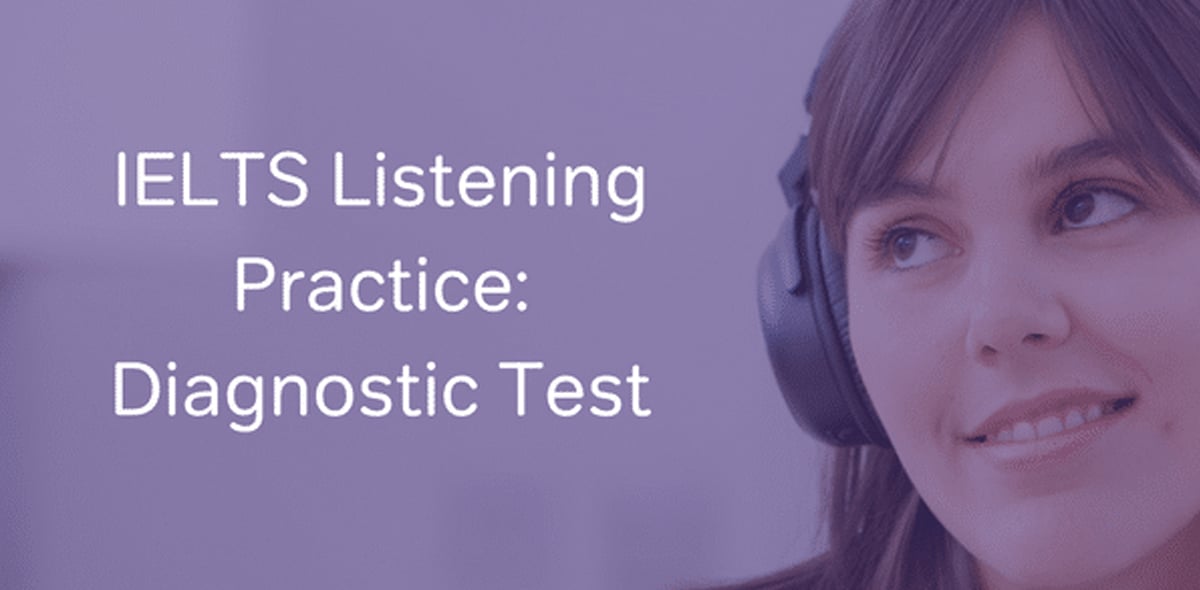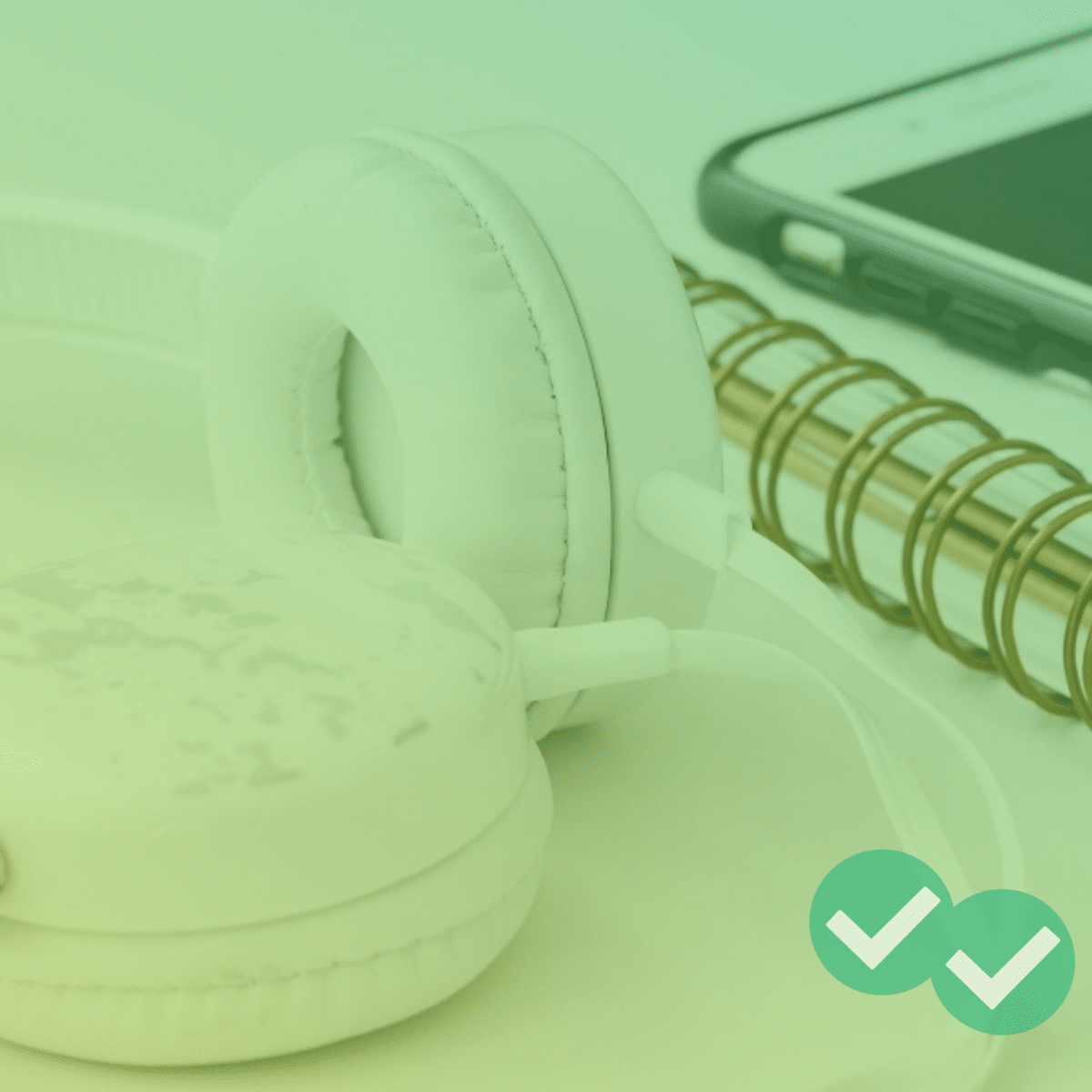
One of the most common questions we hear boils down to something like this: How hard is the IELTS? This question is connected to another frequently asked question: Is the IELTS easy? These questions are different sides of the same coin, and both questions attempt to gauge the relative difficulty of the IELTS.
The direct and honest answer to those questions is this: It depends. How strong is the test-taker’s command over English? How easy is it for them to learn new languages? How do they do under stressful, three-hour long test conditions? How do they deal with talking with strangers under pressure? In short, it depends because we’re all different and go into the test with all of our uniqueness. So, to rephrase the question to be more precise, we might put it this way: “How difficult is the IELTS for you?”
How Hard is the IELTS for You? Self Assess!
So, how hard is the IELTS? To begin with, the IELTS comes in one of two types: Academic and General Training. The Academic test tends to be harder for more people because, to do well on it, a test-taker will need to have greater mastery of English and a broader working vocabulary compared to the General Training version.
We also need to assess the test-taker: ourselves. Each of the four IELTS components – listening, speaking, reading and writing – can be difficult in their own way. To get an indication of how hard you might find each segment, I’d recommend taking a practice test for each of the categories.
Click to see instructions for your self-assessment
At the end of each practice test, check your performance against the relevant assessment checklist below, which are based on how the IELTS is marked. Circle the number 1-9 (where 9 is the highest). Be realistic about your assessment and include notes on how you felt with regard to each criterion so that you can help identify your strengths and weaknesses.
If most of your circles are 1s to 5s, that would indicate that you will find the IELTS exam challenging. I’d recommend a lot more practice before attempting the examination. If most of your scores are 8s and 9s, that indicates that you’ll likely find the IELTS exam relatively easy. Aim for the most of your circles to be 7s or higher if you want a good IELTS score on examination day.
To check your progress, each time you do a practice exam or an exercise, rate your performance against the relevant checklist below. Date and keep a copy of each checklist to track how you improve.
Listening Difficulty
Most students find the listening section the hardest part of the IELTS. In this section, test-takers have to listen, remember, and then draw on a lot of information to answer the questions. This requires a lot of concentration, which can be exhausting if you aren’t used to listening to a lot British English and, possibly, unfamiliar English dialects.
Here’s a checklist of questions to consider for the Listening section:
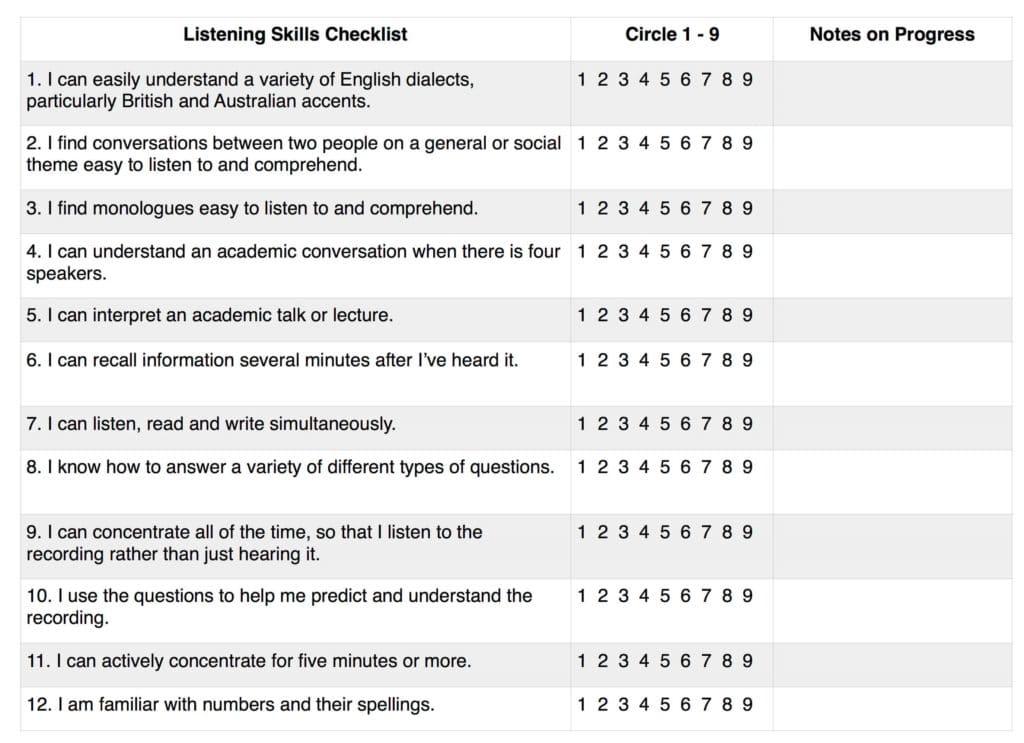
To get an even better sense of how well you’re doing on that checklist, you can go through Magoosh’s free online IELTS Listening Diagnostic test.
Speaking Difficulty
Most test-takers will find this section the most comfortable. So, test-takers tend to perceive it as the least hard section of the IELTS. But that self-perception can be deceptive. Students often struggle to stay on topic and give complete answers.
Use this checklist below to assess your skill level. For this assessment, it’s best to have a native English speaker help assess your skills, although you can also use Magoosh’s IELTS Speaking diagnostic quiz.
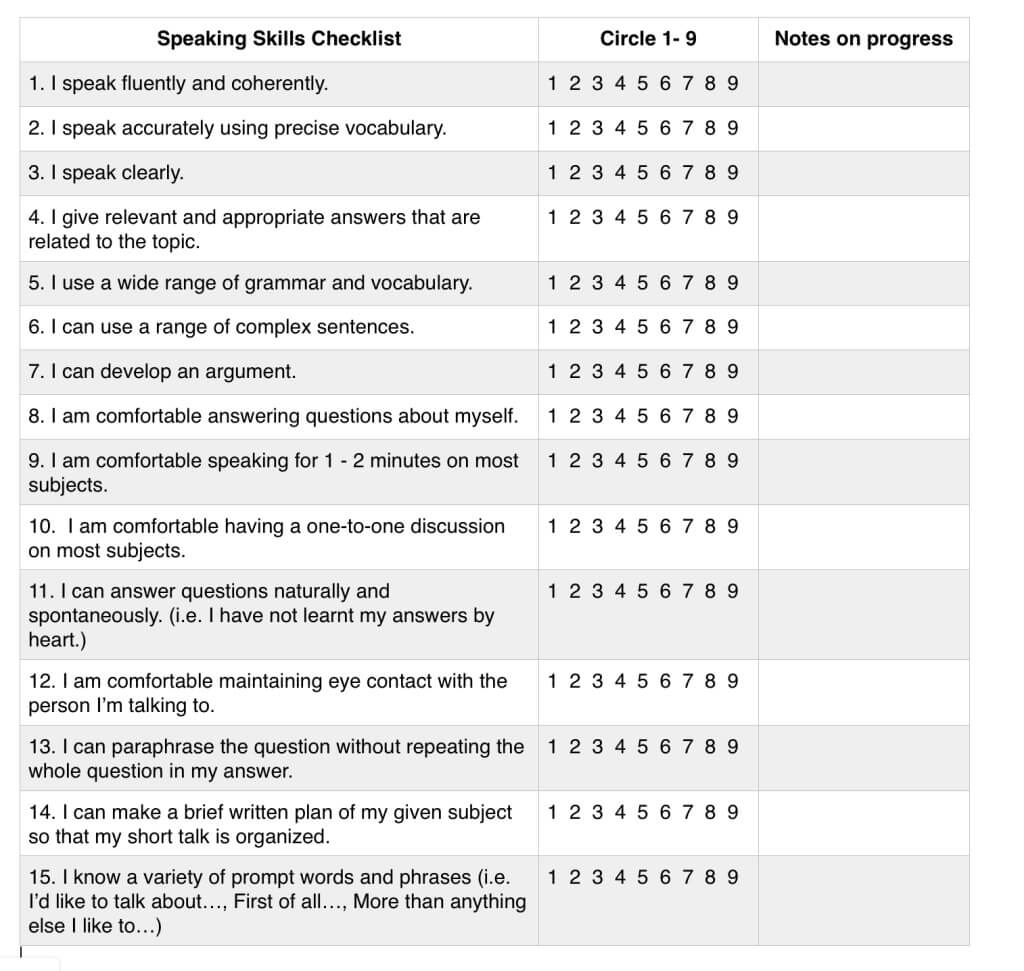
Reading Difficulty
The sheer amount of reading within the time limits make the Reading section of the IELTS quite hard. If you’re good at skimming and scanning, you’ll find this section less hard. If you have an expansive vocabulary, you’ll likely find this section relatively easy (especially for Academic). But if your vocabulary isn’t strong, you’ll likely find this part of the IELTS quite difficult.
If you want to check and see where your skills are right now, we have a post for that: a full IELTS Reading passage and question set you can complete!
And you can also self-assess by checking your skills against this IELTS Reading skills checklist:
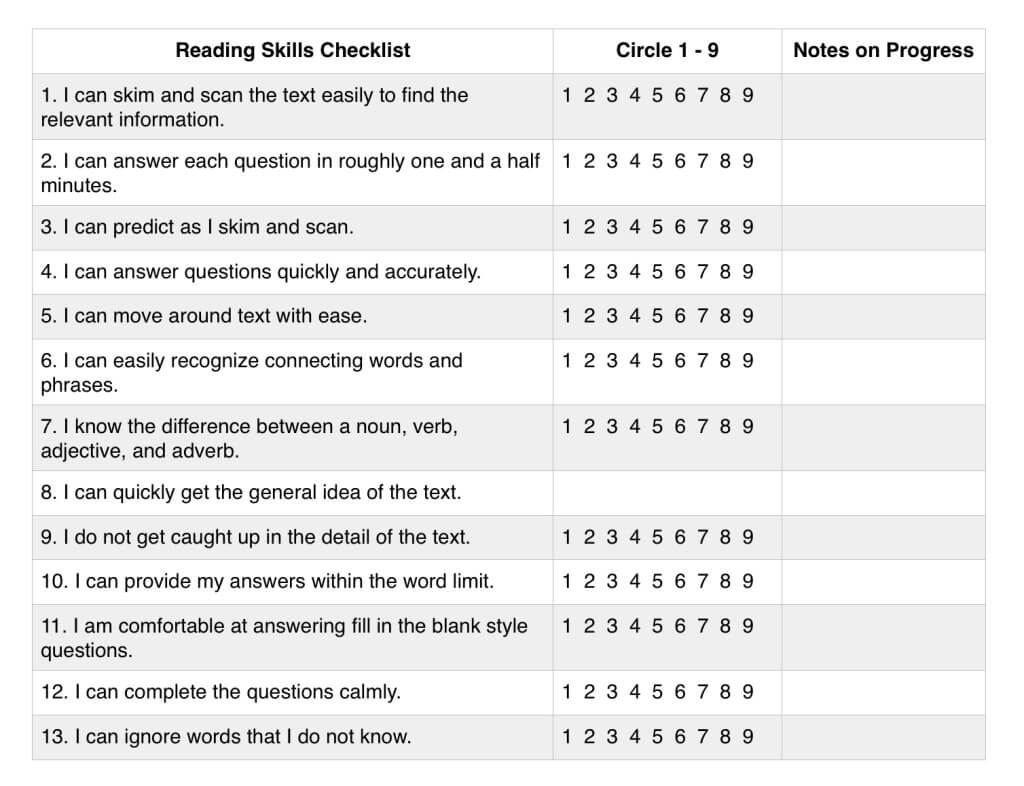
Writing Difficulty
Many test-takers find the writing tasks quite hard. It’s difficult to come up with good examples to illustrate a narrow and clear response that fully addresses the prompt within the 60-minute time limit.
Assess your skills using this checklist:
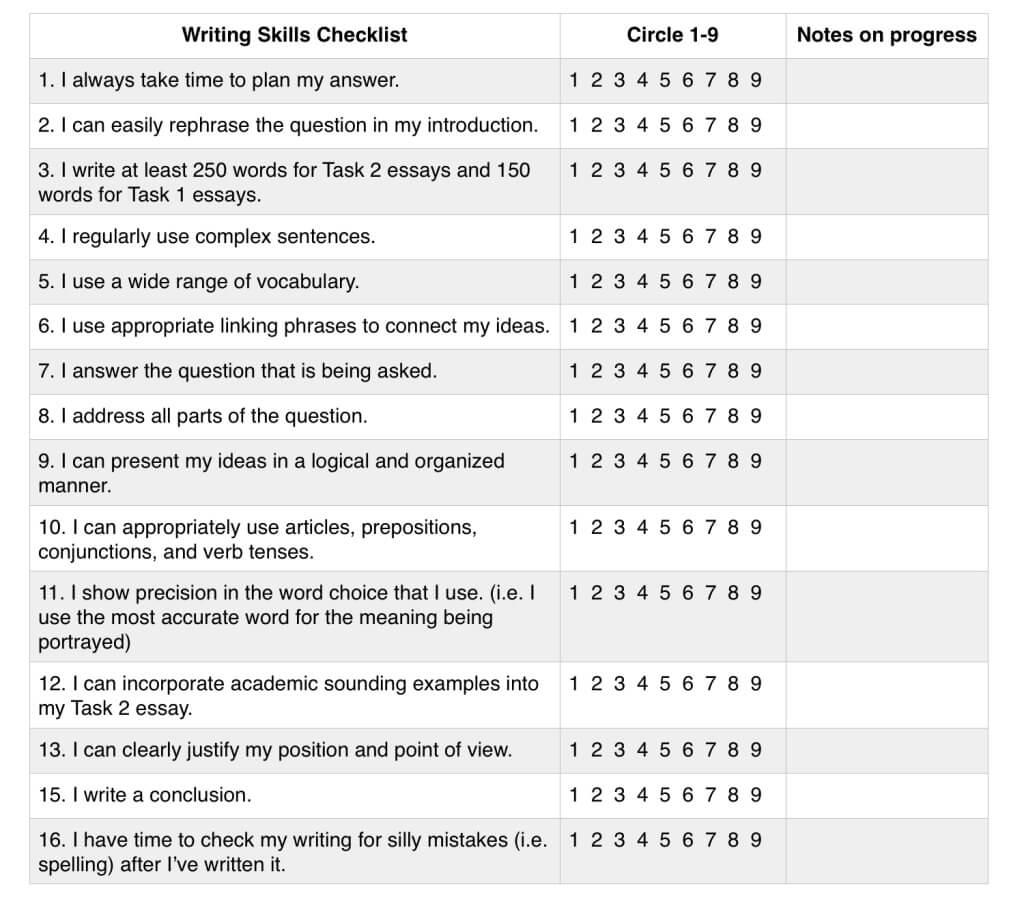
It’s a good idea to regularly practice writing questions. As you do so, keep the checklist above handy! This will help you identify the specific areas you need to improve and make it easier for you to improve. Plus, it’ll help you know when to seek outside help to improve your overall Writing score. To get started with practice for this section, try our one or more of Magoosh’s free IELTS Writing tests.
And check out the best IELTS Writing resources or get a free trial of Magoosh IELTS prep to help get you ready.
What factors might make the IELTS easier?
-
Fluency in British English:
The IELTS likes to present itself as testing for proficiency in global English. But, if we’re honest, the test presumes the test-taker’s proficiency in standard British English. Most of the passages in IELTS Reading are written in British English, and when it comes to IELTS Listening accents, any audio track will have at least one British speaker on it. So, if you are comfortable with British English, the IELTS will be less hard than if you’re comfortable with English from other contexts.
- Familiarity with Graphs, Charts, and Tables:
The IELTS also requires visual literacy — the ability to read graphs, charts, and tables. Provided you’re comfortable with reading visual information, this aspect of IELTS may be easy for you. (IELTS Reading, Listening, and Writing all provide visual support for the English you read, hear, and write.)
- Familiarity with letter-writing and everyday English:
If you’re planning to take the General Training version of the IELTS, you’ll want to also familiarize yourself with and practice letter-writing. Letter-writing is a unique art and can take some time to learn if you don’t regularly write letters, both formal and informal. Luckily, there’s an excellent video and article that breaks down how to write a letter that’s worth your time.
Test-Taking Skills
Another thing to consider is the medium of the test. While the computer-delivered IELTS is becoming more common, the IELTS is still most widely available as a paper-based test. So, unless you live near a computer-delivered test center, you’re likely going to be taking the paper-based test.
Are paper-based IELTS tests easier? Is the computer-delivered IELTS harder?
Click to see the answer
Everything from the passages to the questions is the same regardless of the medium. So, the tests won’t be easier or harder in terms of the actual content. But our comfort with the test medium does matter. So, if you find paper and pencil tests more comfortable than computer-based tests, then you’re more likely to find the paper-based IELTS less hard because it’s a familiar medium — you’re not having to get used to something new.
To get a sense of what the paper-based test feels like, check out Magoosh’s free IELTS practice test (Academic and General) in PDF form. You can use this to get an idea of whether you prefer the paper-based IELTS or the computer-delivered test (CDT).
In addition to the test medium, you might also find test-taking itself very easy or hard. If you struggle with test-day nerves or just haven’t taken a test in a while, that’s okay and you’ll be okay! Everyone can be ready for the IELTS with enough time, resources, and diligence. Try a longer IELTS study plan if you think you’ll need more time to prepare.
Goals for the IELTS
When people ask “How hard is the IELTS?” or “How easy is the IELTS?” they’re also asking these questions: “How difficult is it to get the band I need?”
The answer to this question depends on your personal goals and needs. Suppose you just need a passing band (say, a 5 band) for work, you’re already proficient in English, and are used to standardized language tests. Then the IELTS won’t be as hard for you. But suppose you need to get a pretty high band (like an 8 band) to get into your dream program and you’ve not studied that much English, then the IELTS will be harder for you. As we mentioned earlier, knowing that the test will be harder just means that you’ll have to plan on spending more time to get to where you need to be.
Is the IELTS easier than the TOEFL?
Along with learning about how hard the IELTS is, many also want to know how the IELTS compares with the TOEFL.
In short, it’s complicated. Test-takers have been debating the relative difficulty between the two for many years, and there isn’t a clear-cut answer. This is because the relative difficulty of the IELTS and the TOEFL depends on your own language abilities and test preferences.
To figure out if the IELTS is easy compared to the TOEFL (for you), check out Kate’s direct comparison of IELTS vs. TOEFL. Whichever test suits you, Magoosh offers study plans for both the IELTS prep and the TOEFL prep to support you in your studies.
So, how hard is the IELTS? It depends on a lot of factors. But what’s important is this: You are in control of most — if not all — of those factors. Keep a realistic assessment of yourself, use good study material, and follow a well-structured plan. And, most importantly, be patient and gracious with yourself. Learning a language is hard. All the best, and happy studying!


